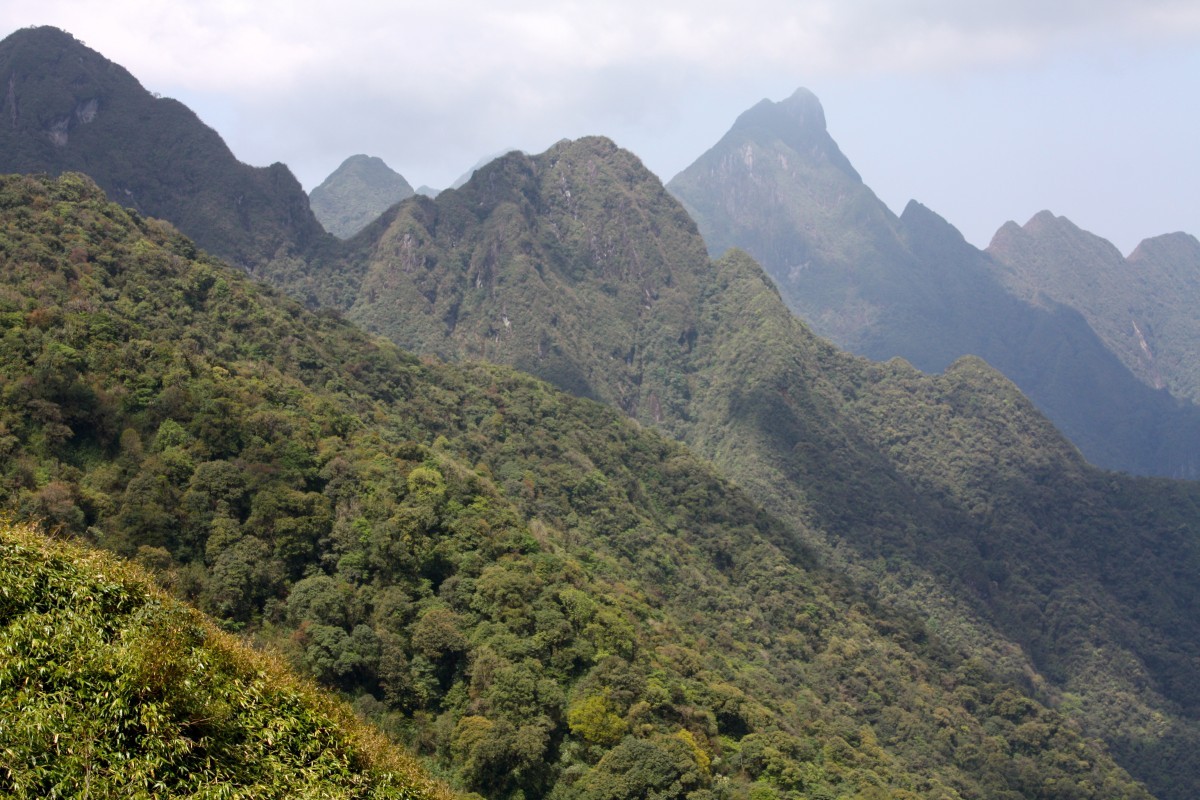
The Hoang Lien Mountains are the highest in Indochina and are part of the most easterly extent of the world’s greatest mountain chain, the Himalayas. As the prevailing winds are westerly, enormous amounts of moisture are drawn from the sea and captured by these mountains blessing Vietnam with abundant water resources and a stunningly diverse flora, including a third of all the Carex species known from Vietnam.
Exploring the unknown
Bruce Ford, department of biological sciences, Faculty of Science, believes he has discovered the center of origin of the world’s largest flowering plant genus, and he’s out to prove it on a National Geographic-supported expedition to Vietnam.
Ford is the principal investigator of the research project, with Julian Starr of the University of Ottawa as co-investigator. Along with their fellow researchers, they are returning to northern Vietnam on their second journey to the eastern-most extenuation of the Himalayas, where they will trek at elevations as high as 3,000m above sea level in search of new and rare sedge plant specimens.
Sedges belong to the genus Carex, a group of over 2,150 species and the largest genus of flowering plants in the world. Many species fill key ecological roles while others are economically important. They occur in habitats ranging from marshland to deserts and they dominate many ecosystems, including tundra and savanna. Most species of sedges are very common and grass-like in appearance, and Ford jokes: “If you saw one of them on your lawn you would probably run it over with your weed whacker.”
Despite the significance of sedges, plant biologists don’t know how many species exist or how the plants are related to one another. Their reduced flowers and complicated patterns of morphologic variation make the identification of these plants challenging. As a result, many have avoided the study of sedges because of its difficulty.
Over the past decade, however, there has been a marked upsurge of interest in sedges. Recent phylogenetic studies show that Carex is comprised of five evolutionary lineages or “clades”: the Core Carex, Siderostictae, Schoenoxiphium, Vignea, and Caricoid Clades. Interestingly Carex and its most diverse lineages are sisters to Southeast Asian species, many of which possess characters or character combinations that are rare or unique for their clades and the genus.
Ford’s area of study is systematics, the science of classification, naming, and identification of living things. Systematists develop evolutionary classification and identification systems that allow us to interpret the attributes of all plants and animals. These systems are critical to our understanding and protection of biodiversity.
Ford has published numerous scientific papers on Carex (sedges, family Cyperaceae) including treatments for the Flora of North America and is co-editor of the book Sedges: Uses, Diversity, and Systematics of the Cyperaceae (Missouri Botanical Garden Press, 2008). He serves as a member of the board of directors for the Flora of North America Project and is a past member of the Committee on the Status of Endangered Wildlife in Canada. He also curates the University of Manitoba’s Vascular Plant Herbarium (WIN) (winherbarium.weebly.com).
Ford explains: “Most of these unique species of sedges I’m studying from northern Vietnam are new to science or only known from their original collections made by French botanists in the 19th and early 20th century. Despite having only a fraction of world sedge diversity (around 85 species), Vietnam possesses the largest number of these morphologically peculiar sedges, making it key to understanding the evolution and radiation of this remarkably diverse group of plants. We realized we needed to go there, so we applied to the National Geographic Society’s Research and Exploration Grant program.”
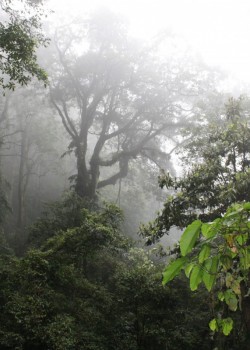
The lush broadleaf evergreen forests of Tam Dao National Park were perpetually covered in fog during our visit. This park has a remarkable diversity of plants including those more typical of temperate climates such as maples (Acer spp., Sapindaceae), ashes (Fraxinus spp., Oleaceae), and elderberrys (Sambucus spp., Caprifoliaceae).
Ford’s first expedition in 2012 allowed his team to explore seven parks and nature reserves in northern Vietnam. They collected over 35 Carex taxa, including species new to the flora and new to science. Phylogenetic analyses confirmed that the most unusual of these species are members of early diverging lineages within Carex, supporting their hypothesis that Vietnam may represent the center of origin for this hyper-diverse plant clade. The results from their research were presented at the international conference MONOCOTS V held at the New York Botanical Garden in 2013. Key findings will also be highlighted in an upcoming paper to be published in the journal Molecular Phylogenetics and Evolution.
Ford notes: “Unfortunately, the 2012 trip was only five weeks long and it felt like we were only seeing the tip of the iceberg in terms of botanical discoveries. So, when we got back to Canada we wrote another proposal stating our request for additional funding in hopes of continuing our research and we were lucky enough to get it accepted.”
The team returning to Vietnam with Ford and Starr includes: Ngyuen Kim Thanh, Vietnam National University; Vu Anh Tai, Vietnam Academy of Science and Technology; and Etienne Léveillé-Bourret, a PhD student from the University of Ottawa. Also in attendance will be Scott Ford, (Ford’s son) a University of Manitoba Fine Arts graduate, acting as videographer and field assistant for the expedition. The team leaves for Vietnam on April 4, 2015, and plans to return home to Canada on May 9, 2015.

Carex adrienii is a poorly known species represented by very few scientific collections. This sedge is a member of Carex section Hemiscaposae; a group of sedges that is renowned for its large spatula shaped leaves that are up to 80 cm long and 13 cm wide.
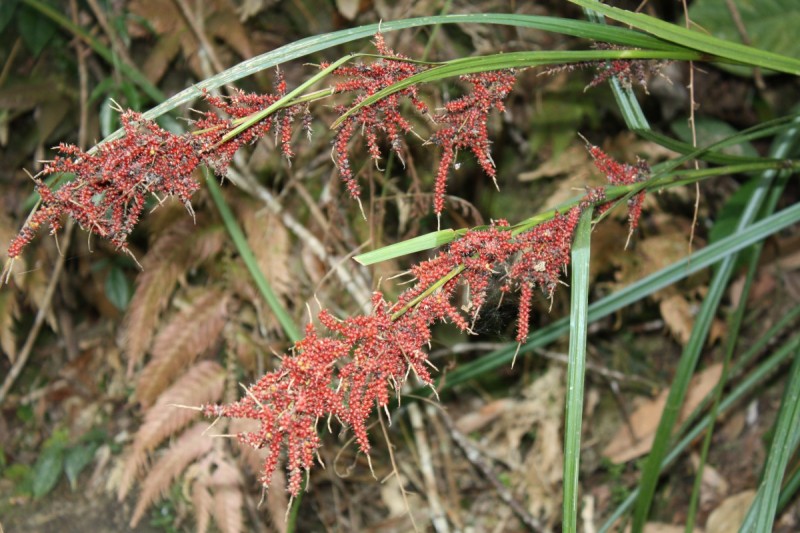
Carex baccans is one of the most common and widespread sedge species in Indo-China. The bright red perigynia (part of the fruiting structure in sedges) are probably attractive to birds and other animals.
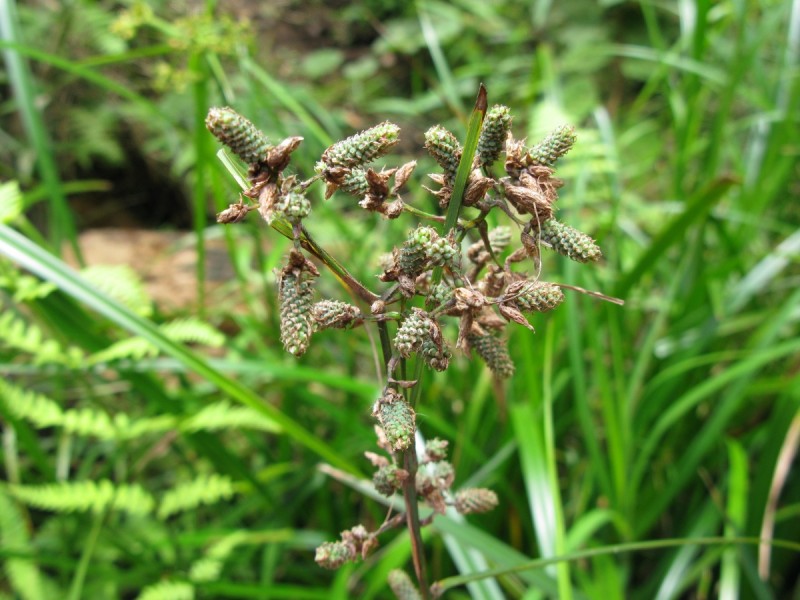
Carex hypolytroides on the road to Tram Ton Pass, Hoang Lien National Park. Sometimes the greatest finds are located in the oddest places – next to a culvert on the side of the road. Morphologically this sedge ranks amongst the weirdest of its kind with a grass-like habit and a multitude of male and female parts displayed over in a multi-branched flowering stock. Amazingly, this species is one of many that shown a botanical link with the highlands of Vietnam and China and those on the isle of Sumatra over 2400 km due south.







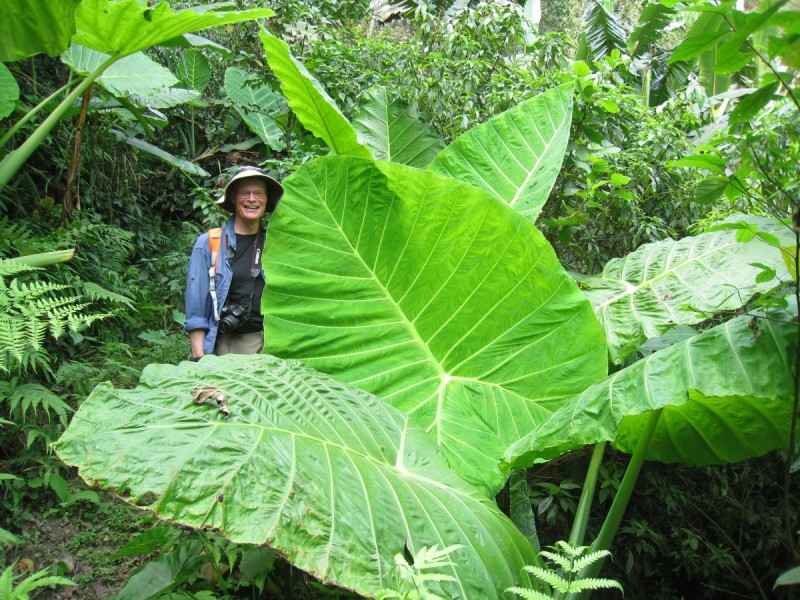
Since I have written two books on Carex I would like
to learn of the publication or presentation of Carex
of Vietnam. Also, which herbaria are receiving the specimens. This is cutting-edge botany. Linda Curtis